|
Memory
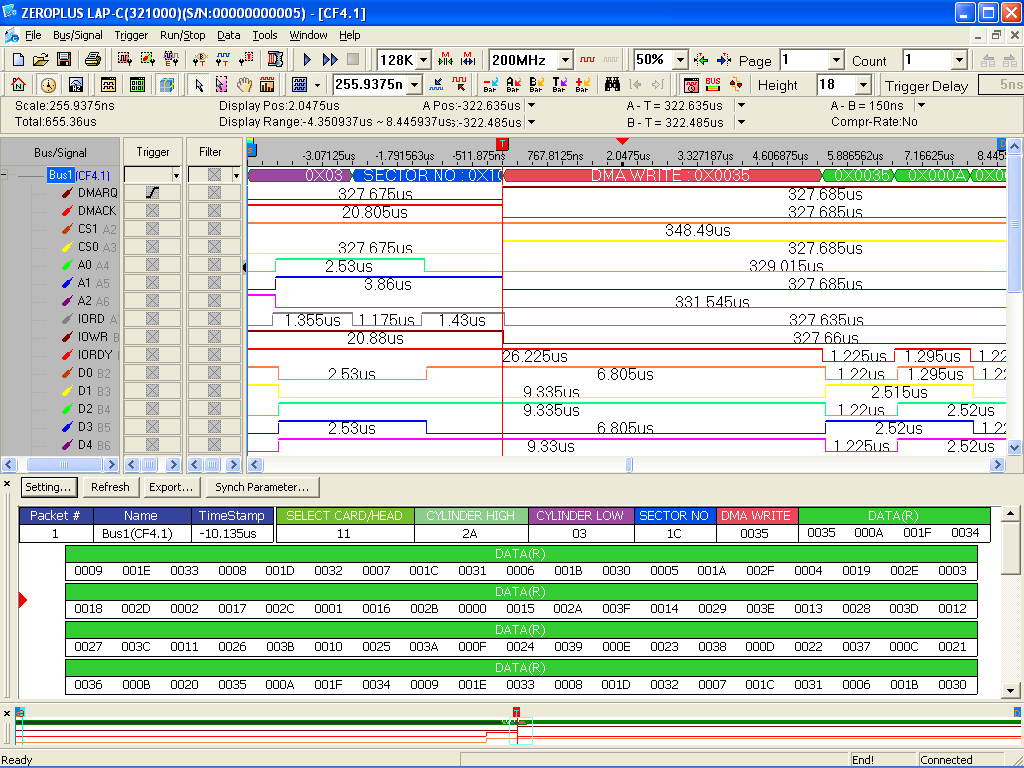 |
|
CF, which is short for CompactFlash, represents the Standardized Flash Memory Card. It was first launched by SanDisk in 1994. The CompactFlash Technology, which is proposed by the CFA (CompactFlash Association), is compatible with the standard of the PC ATA interface. It can be applied in various Flash Memory Cards to access data, and it is most widely used in the Memory Cards of the Digital Camera. |
|
|
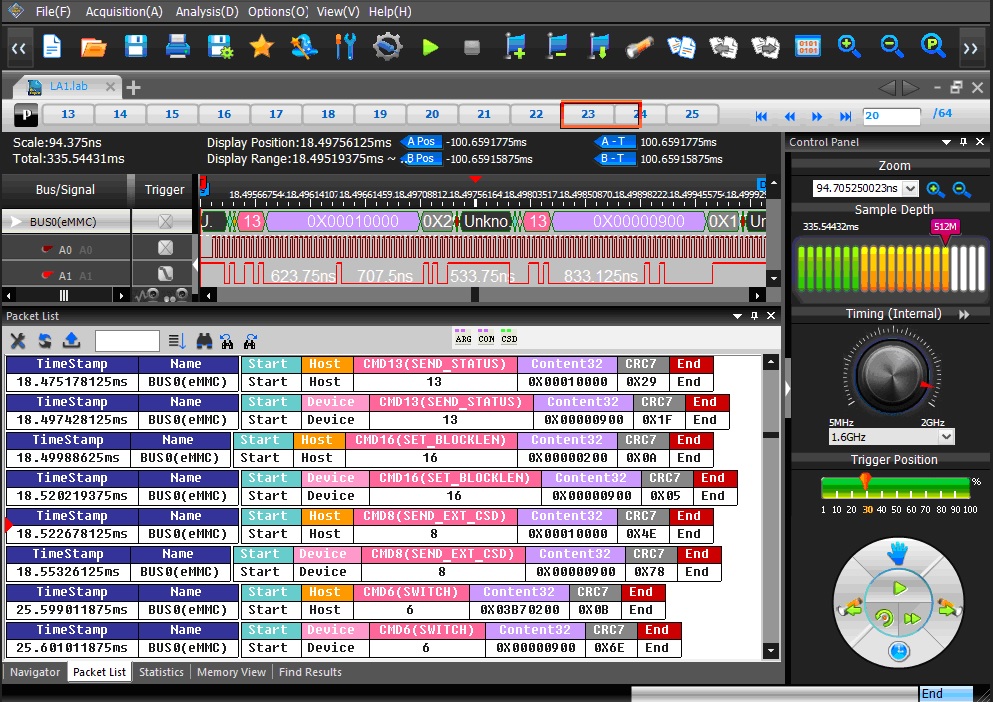 |
|
Simple Introduction for Protocol Analyzer: ( 3 or 4 lines of words) eMMC is a new storage technology. It takes the Flash as its storage medium with similar hardware interface of SD card. With built-in bad block management system, it is easier to operate than the Flash. Since it is smaller than SD card, it can be installed on the circuit board directly; so it is a perfect storage technology to replace the Nand Flash. Nowadays it is widely used in smart phone and tablet PC. This version support LAP-F Series and Bus Expert |
|
|
_EN01.bmp) |
|
I2C, developed by PHILIPS, is a kind of 2-line protocol analyzer. It is mainly used for connecting the microcontroller with the relative peripheral equipments. With the development of the science and technology, the transmission of the digital signal is glutting our daily life; however, if engineers want to research and develop those signals successfully, it is necessary for them to get the corresponding development tools. |
|
|
_EN01.bmp) |
|
|
|
|
_EN01.bmp) |
|
Protocol Analyzer MICROWIRE (EEPROM 93C) of Zeroplus Technology is a kind of the Transmission Protocol, which is based on the MICROWIRE. There are four signal lines for this Module, those are CLK, CS, DI and DO. The CLK is the Clock signal line for the Protocol Analyzer, which is used to sample at the Rising Edge or Falling Edge; the CS is the Chip Select line, which can be enabled at the High Level; the DI is the Command, Address and Data Input line; the DO is the Data Output line. |
|
|
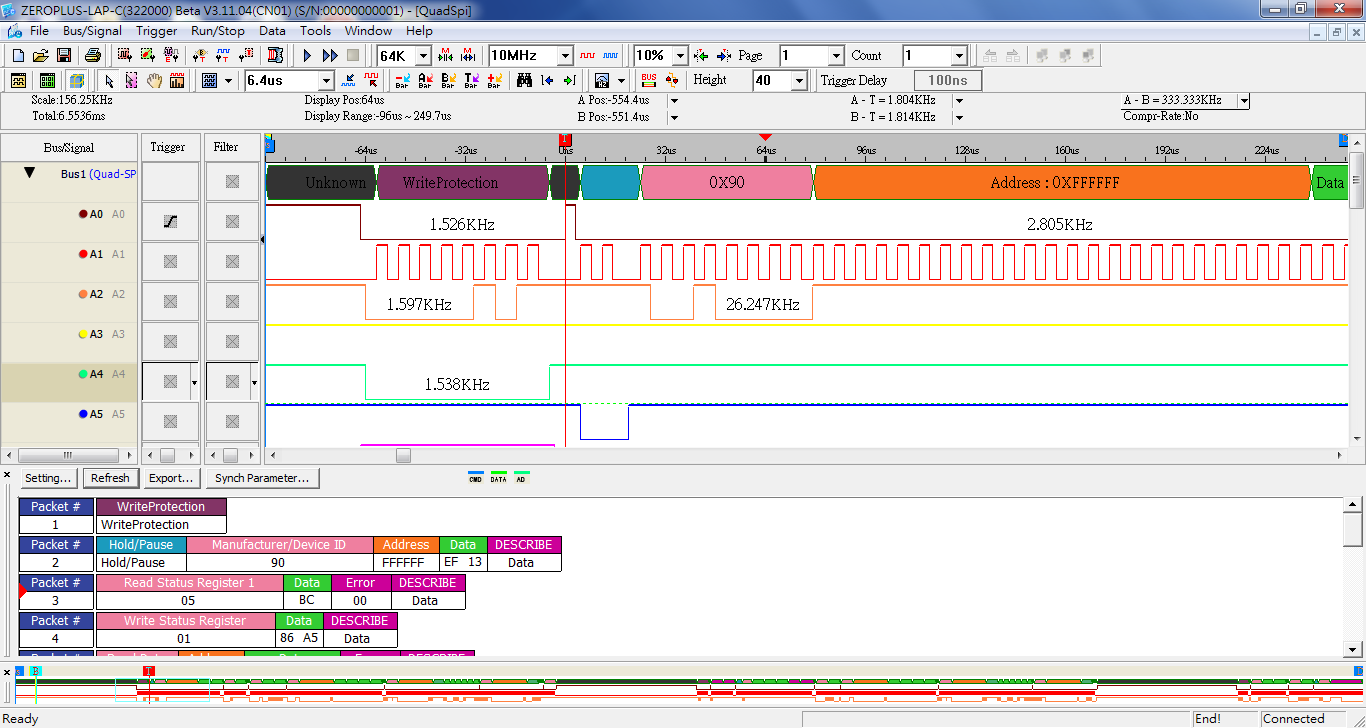 |
|
Quad SPI is one kind of serial SPI. It transmits at a higher speed (compared with the 20MB/s of Dual SPI, Quad SPI can reach to 40MB/s). With 4 lines, more data can be transmitted. Since its structure is different with that of one-line SPI, its decoding mode is also different. |
|
|
EN_01.bmp) |
|
The Protocol Analyzer SAMSUNG K9(NAND Flash) is mainly applied in the NAND FLASH MEMORY of K9 Series which is produced by SAMSUNG. Users can control the Read/Write Operation of the FLASH components according to the SAMSUNG K9(NAND Flash). It can be divided into two specifications, 8 bit and 16 bit, and the maximum capacity of the K9 NAND FLASH MEMORY can be up to 8Gb at present. |
|
|
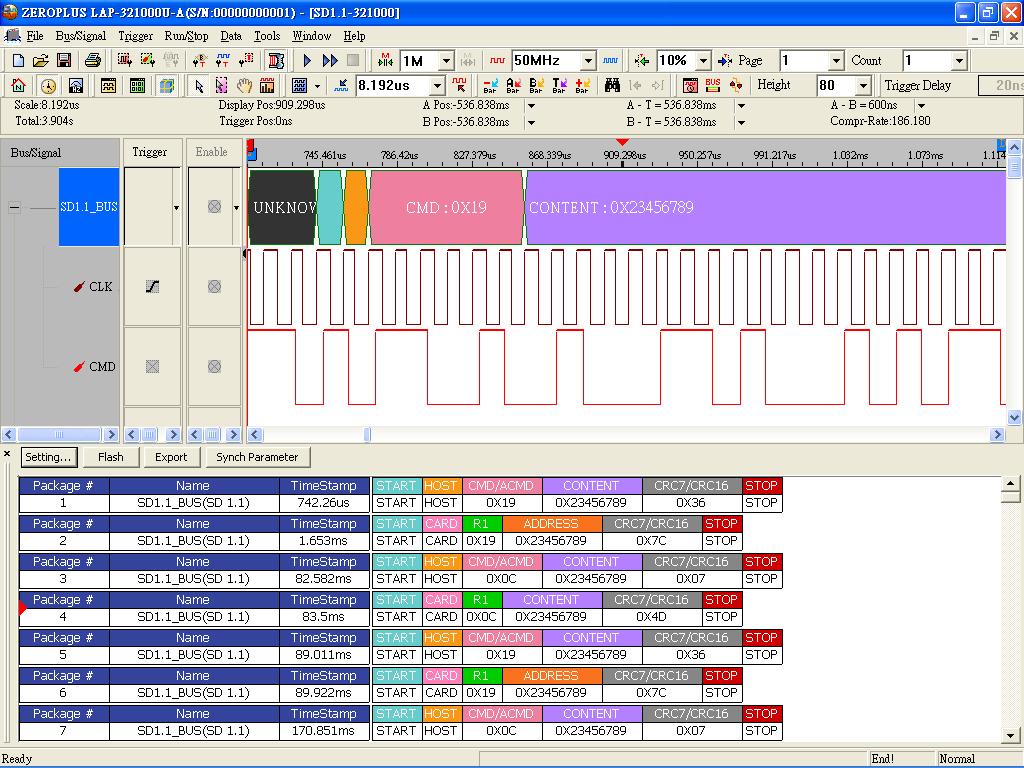 |
|
SD is the abbreviation of Secure Digital and is one standard of memory card , it is widely used in the portable devices , such as digital cameras ,PDA, mobile phones and multimedia players and so on. The technology of SD is based on the MMC format , but the SD card is thicker than MMC .There is higher speed for data transmission ,and also changing the standard frequently . The profiles of most SD cards set the anti-wirte control to avoid writting the data accidently , less of the SD cards supports the technology of DRM . SD card provides different speeds through the method of 150KB/s of CD-ROM as one times speed to count . Basically , its transmission speed is more 6 times(900KB/s)than the normal CD-ROM , the high-speed SD card can transmit 66x(10 MB/s)and 133x or higher speed. *Signal require higher sample rate, not support on LAP-C(16032)/(16064) |
|
|
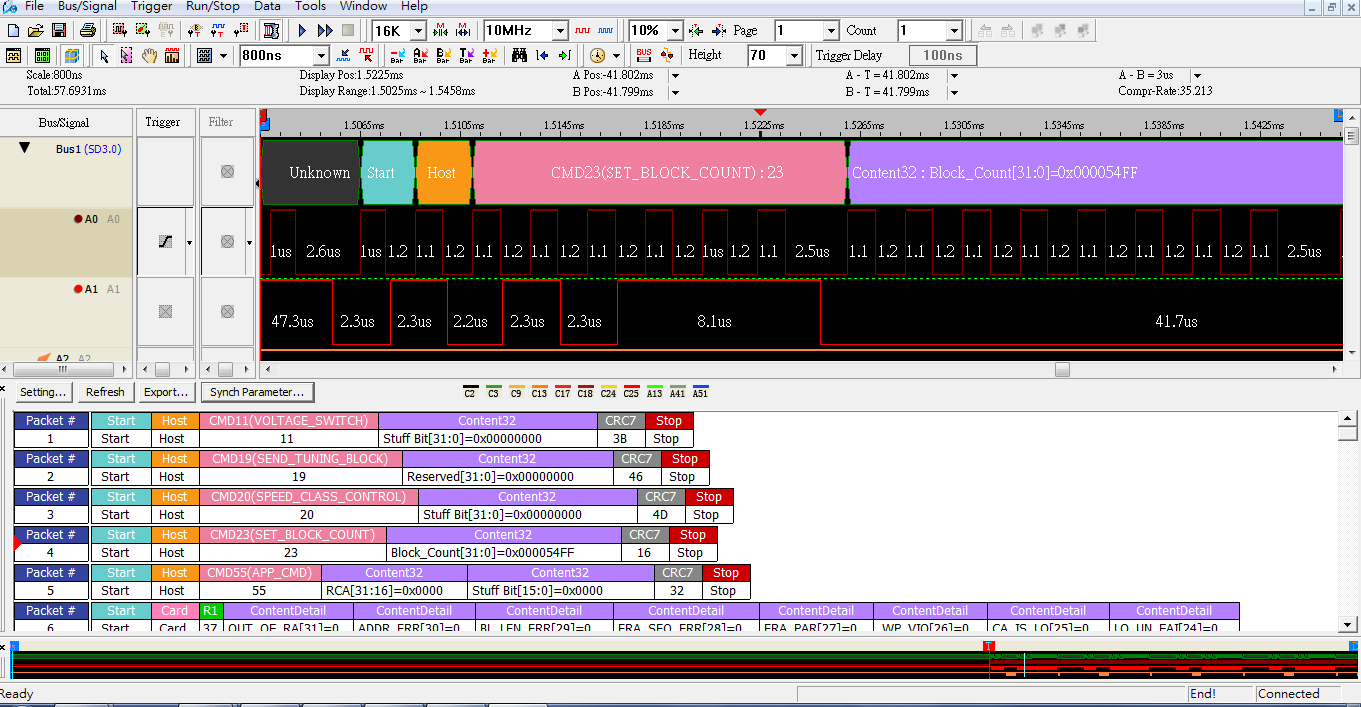 |
|
SD3.0 is to define higher memory size(up to 2TB) and higher transmission speed (up to 208MHz from 50MHz of SD2.0). It has three transmission modes: SD 4-bit Mode, SD 1-bit Mode and SPI Mode. The pins used in decoding are: CLK, CMD and Data0-Data3. |
|
|
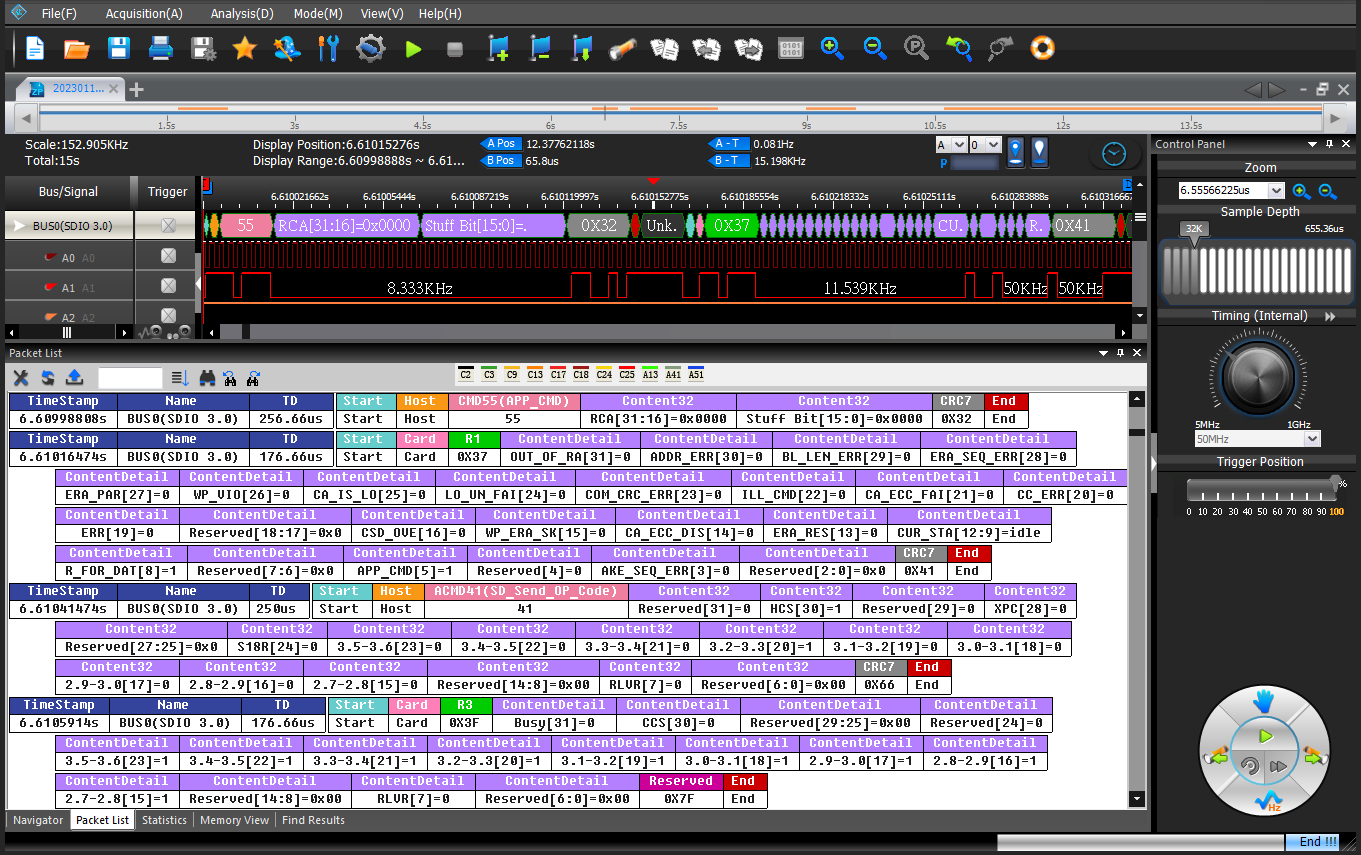 |
|
SDIO defines a peripheral interface on the SD standard, with two applications: removable and non removable. SDIO adds low speed standards and supports low speed I/O capabilities with minimal hardware spending. |
|
|
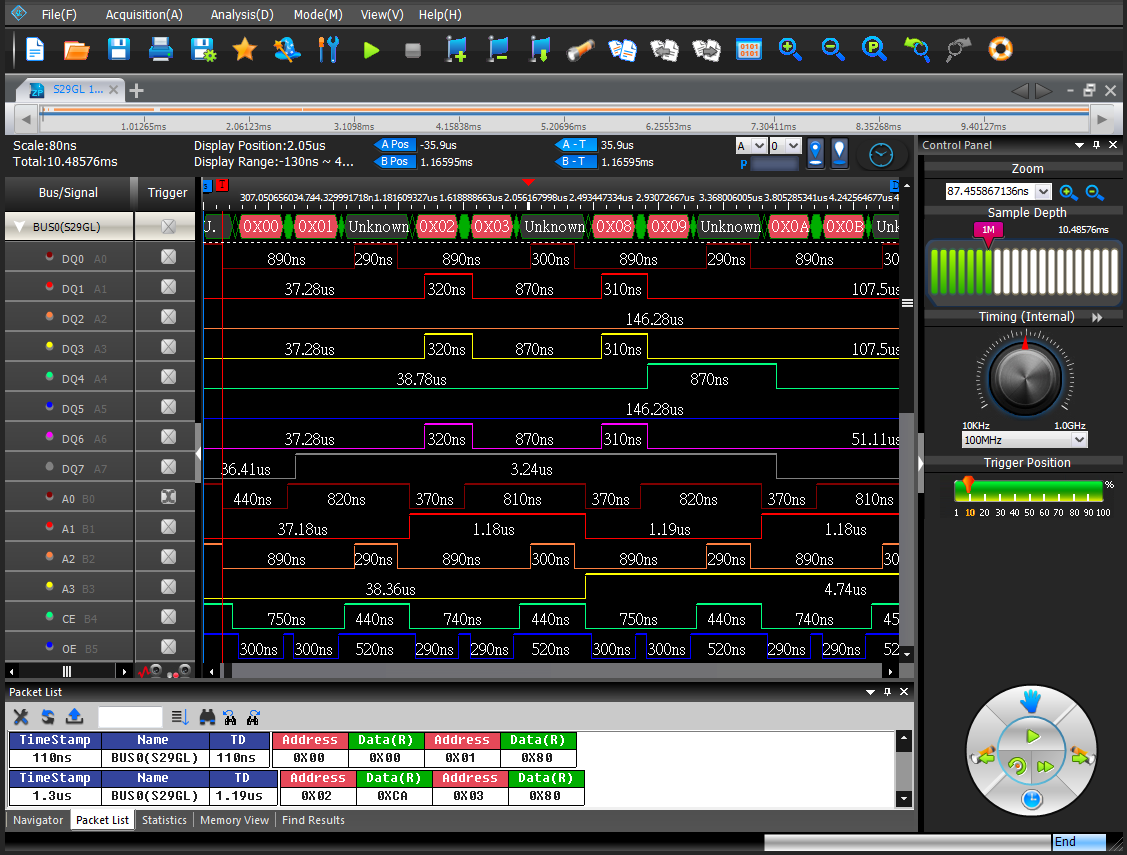 |
|
The S29GL series IC is a 3V NOR Flash memory produced of Cypress by Infineon, with storage capacities of 128Mbit, 256Mbit, 512Mbit, and 1Gbit. It adopts parallel interfaces and has a wide range of applications, including automotive electronics, industrial automation, medical equipment, and communication equipment. |
|
|
_EN01.bmp) |
|
AT25F512/1024/2048/4096/S010/S040, developed by ATMEL, is the Serial Memory. And its Memory Size is from 512K Bytes to 4M Bytes. AT25F512/1024/2048/4096/S010/S040 communicates with the controller by way of the synchronous serial mode, which needs four channels (CS, SCK, SI and SO) to transmit the corresponding data. |
|
|
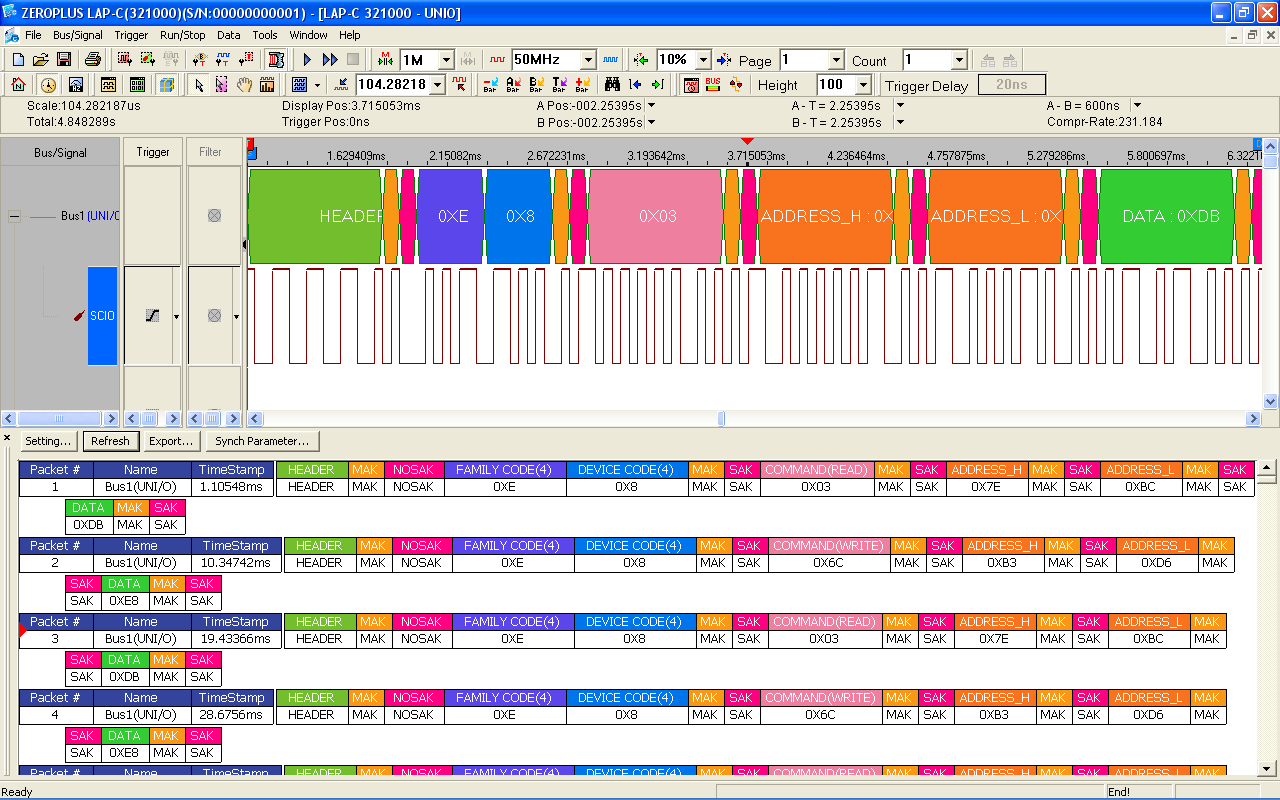 |
|
With the trend of the miniaturization of Embedded System, the Minimization requirement of I/O pins is higher and higher when the information is transmitted in the elements. Microchip has developed the Protocol Analyzer UNI/O, which is a solution that is low cost and easy to realize. UNI/O only needs one I/O signal when the information is transmitted, which is convenient for reducing the size of the product greatly to accord with the trend of the system miniaturization. |
|
|
|
|
|

